When you see the words hot and sour soup, you'll probably think of a Chinese soup. Back when I would make a soup of the day, every day, one of my standbys was an hot and sour soup with mushrooms inspired by Eastern European flavors like paprika and cabbage or root vegetables. It's a great way to use honey mushrooms, which are one of the best wild mushrooms for soup.
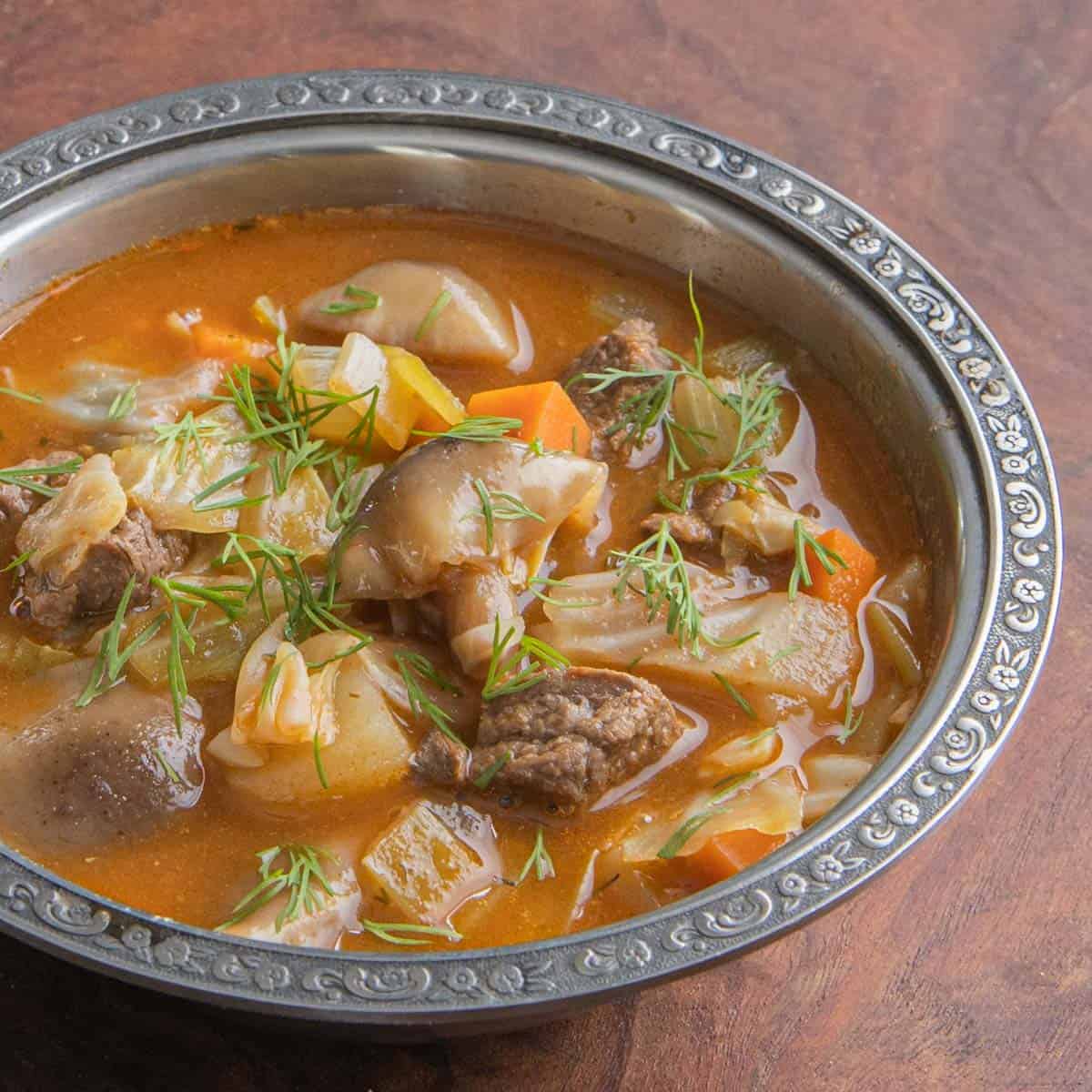
If you're looking for the hot and sour soup of Chinese-American restaurant fame, see my Hot and Sour Soup with Wood Ear Mushrooms.
How to make it
This is a simple soup with cabbage and vegetables, with two special techniques to mention.
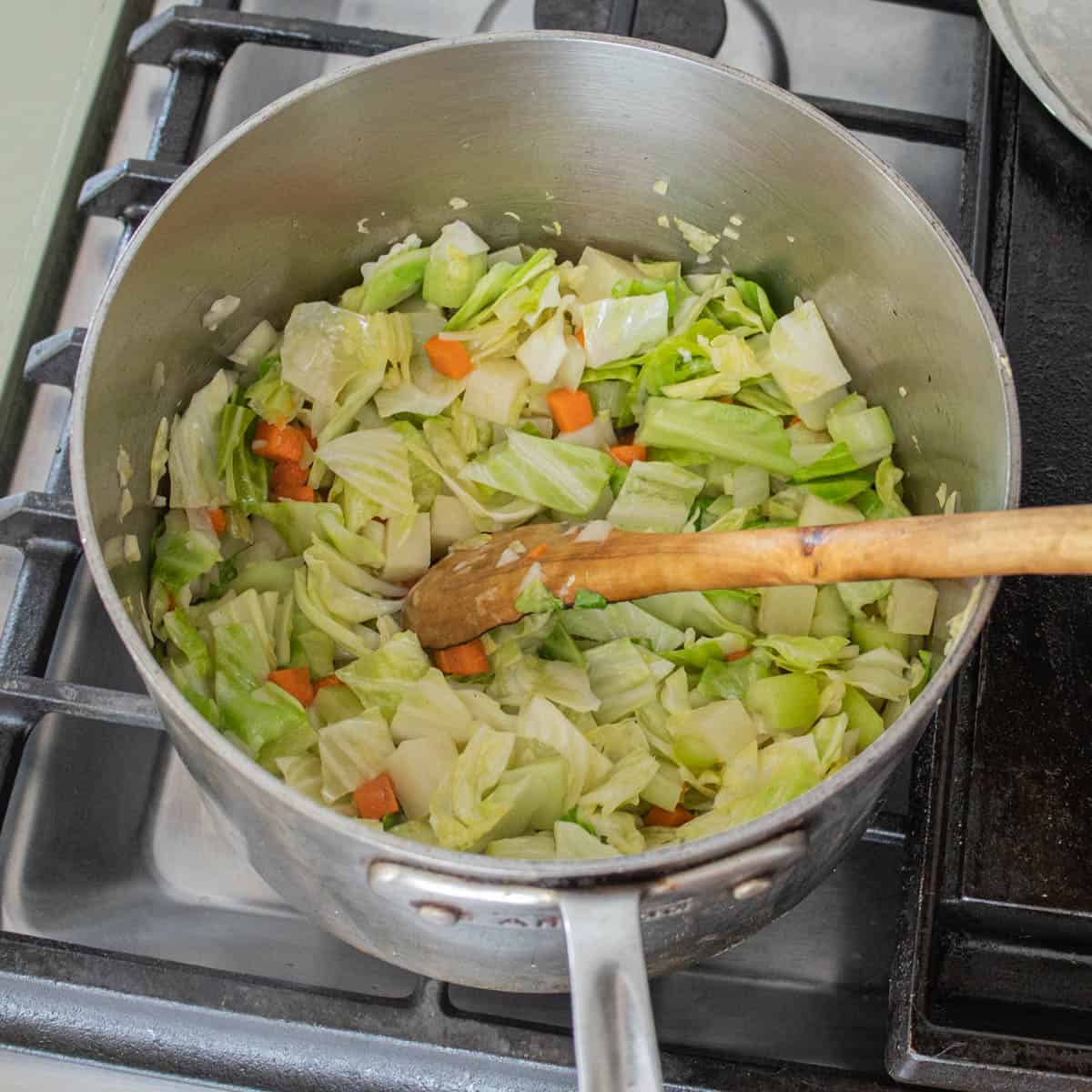
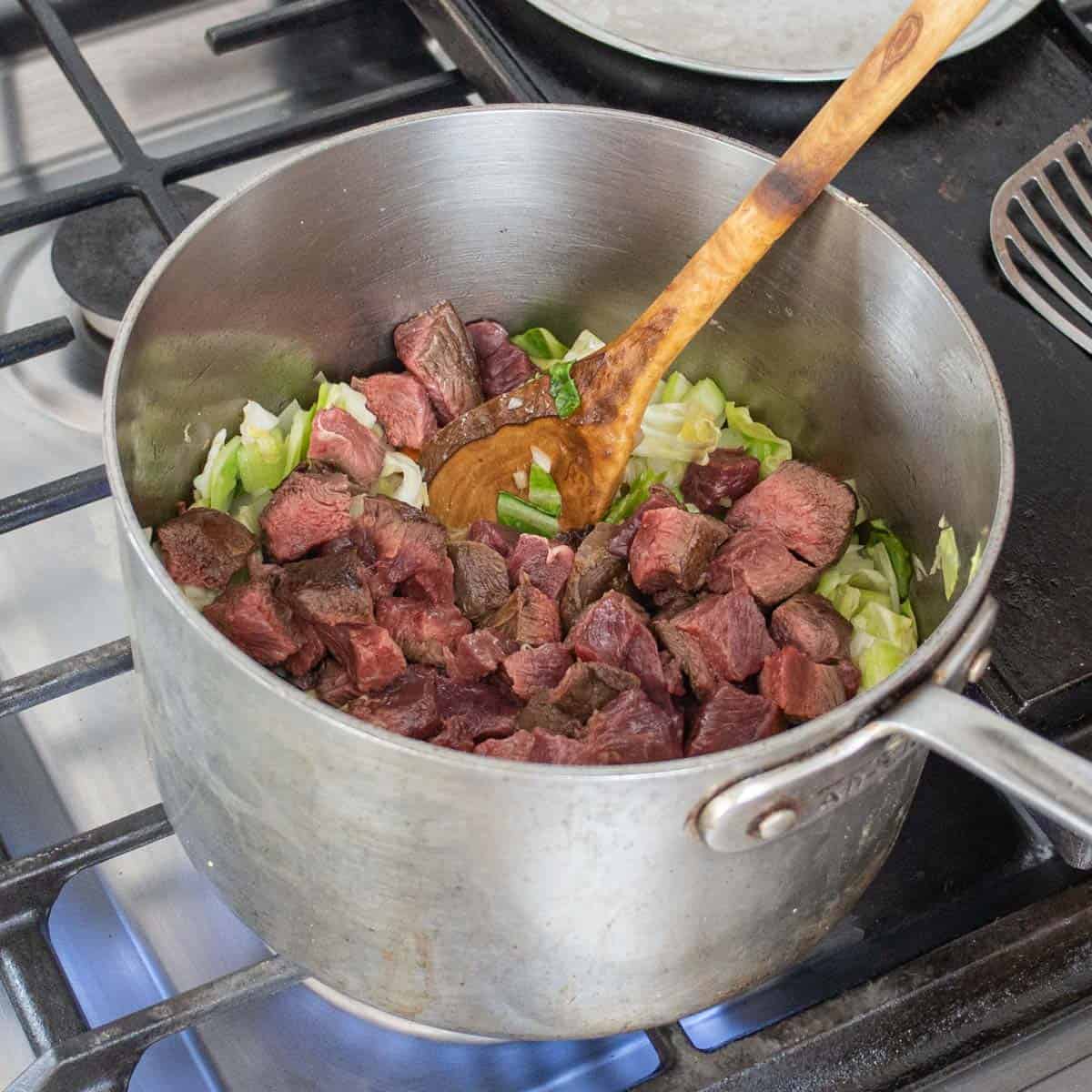
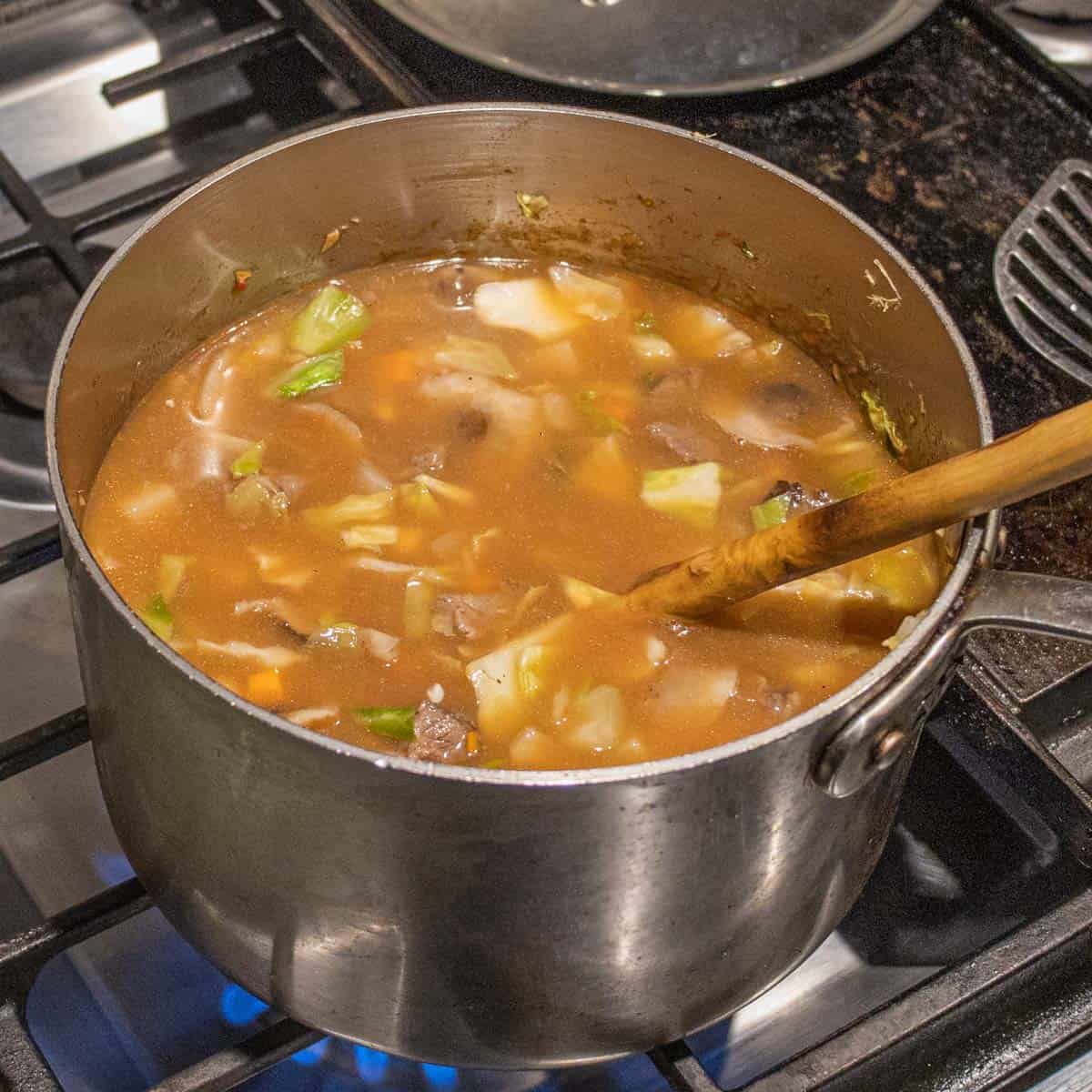
Searing a whole piece of meat
The first tip that you can use for many different soups like this is searing a whole piece of meat instead of individual cubes for soup. It's hard to brown individual pieces of meat in a pan, but easy to brown a single large chunk. The browning of the meat adds flavor to the broth you won't get anywhere else.
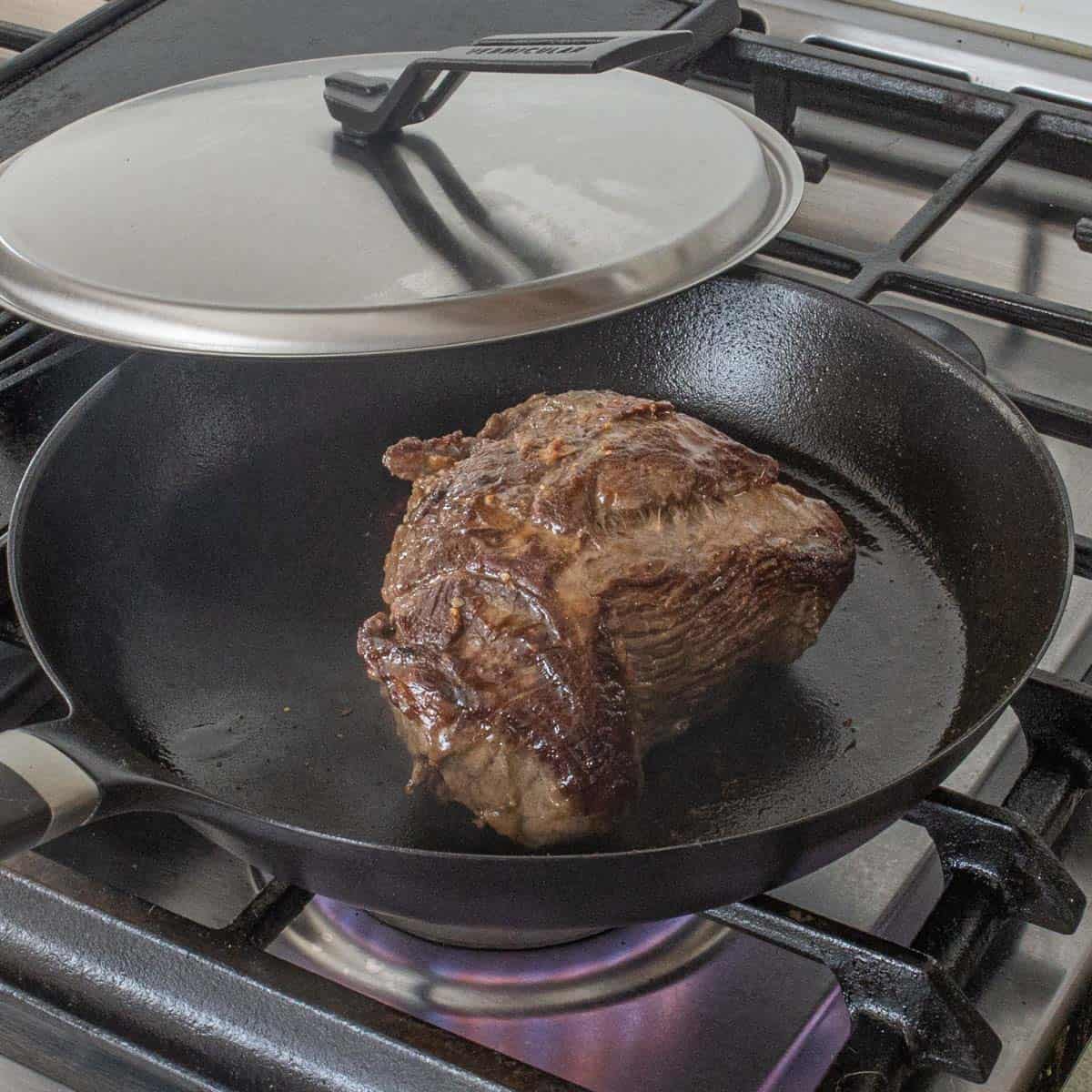
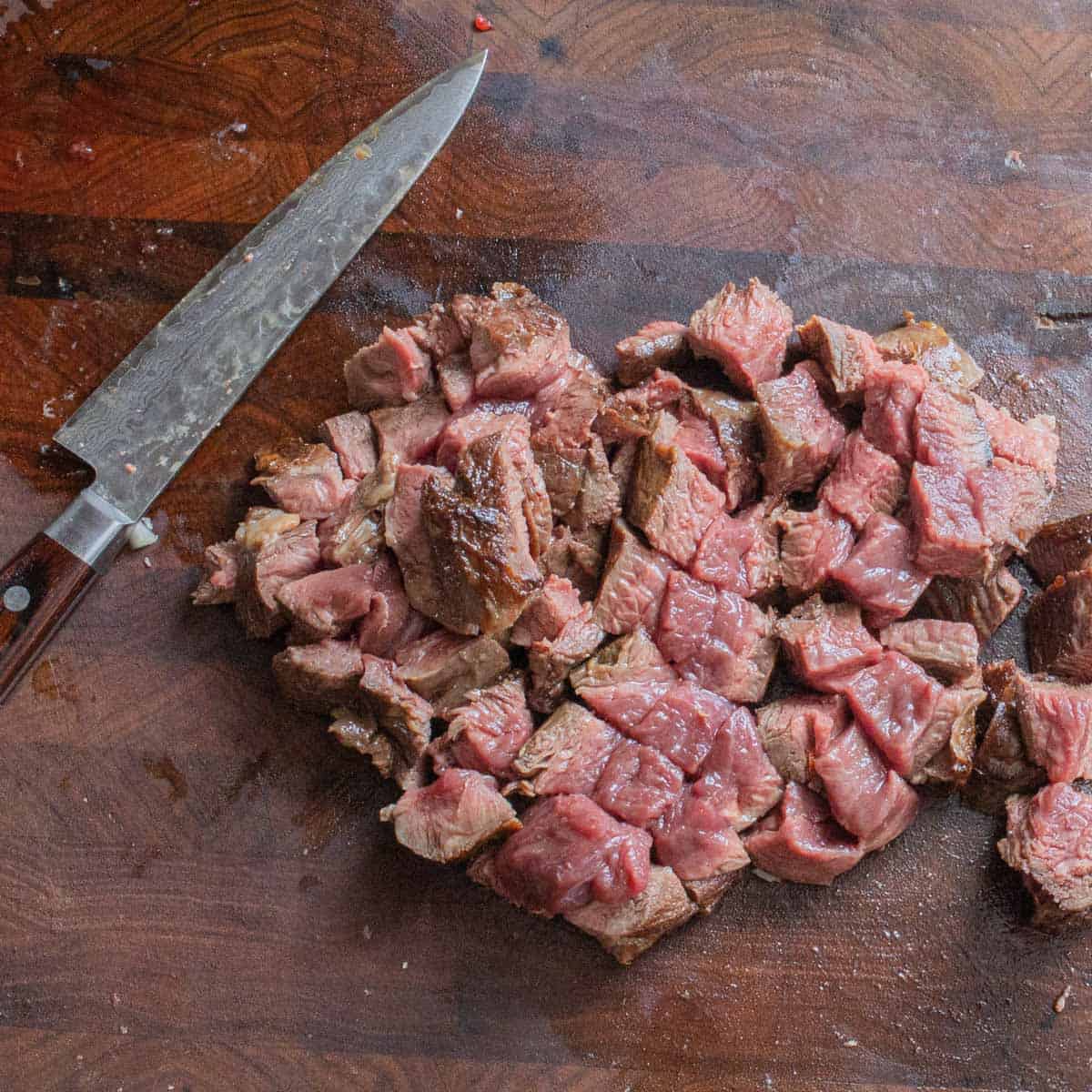
Thickening the soup with honey mushrooms
The second trick is the honey mushrooms or Pidpenky as they're known in Russian. Honey mushrooms are special in that they thicken the soup without adding flour or cornstarch. It's not a slimy texture, but a velvety, pleasant one.
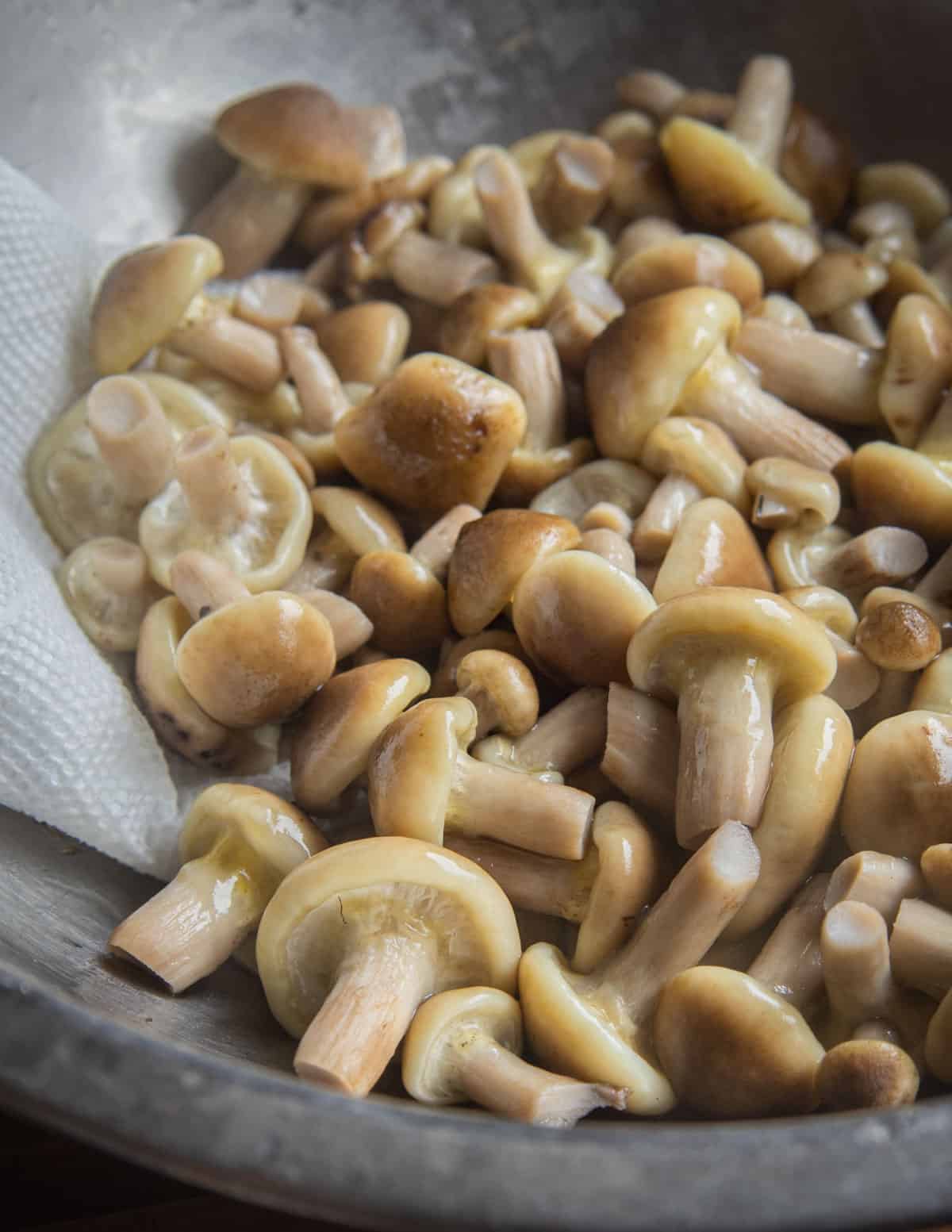
Adjusting the flavor
Seasoning a soup with vinegar to taste may seem odd, but it's an old chef trick that really brightens up soups. It's especially good with cabbage-based soups. Add the vinegar slowly and stir, taste and season again until it tastes good to you.
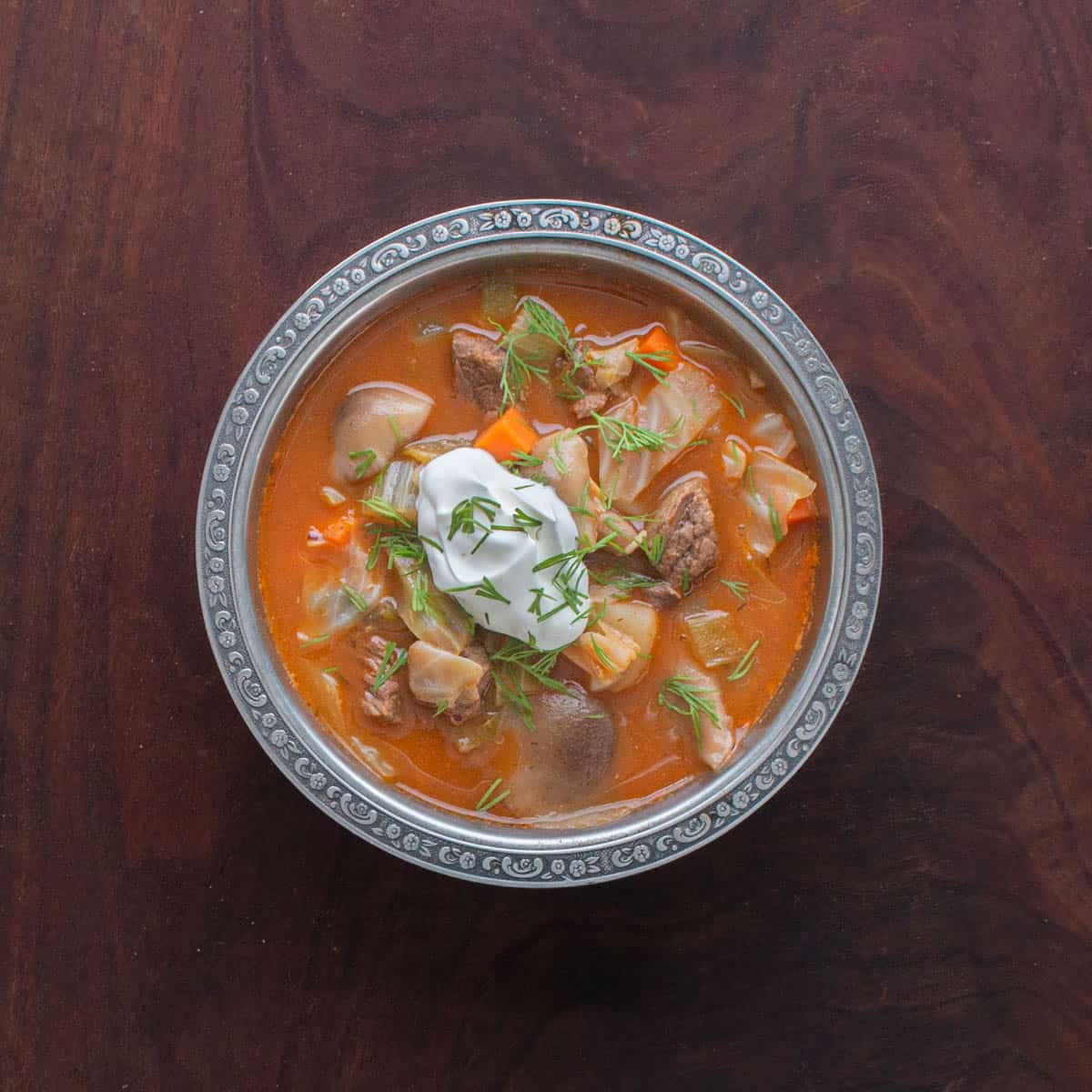
Hot and Sour Venison Soup with Honey Mushrooms
Ingredients
- 1 lbs venison, beef or lamb, in one piece Shoulder, neck, or shanks
- ¼ cup grapeseed or canola oil for browning the venison
- 3 cloves garlic sliced
- 2 tablespoon sweet paprika
- 1 cup diced white onion
- 3 oz Celery diced
- 3 oz Carrot halved and cut into slices
- 1 tablespoon tomato paste
- 6 cups chicken stock or water
- 1 lb green cabbage you could use napa or savoy cabbage too
- 1 pinch crushed red pepper flakes
- ¼ cup rice wine vinegar plus more to taste
- 8 oz fresh or frozen honey mushrooms trimmed of their stems, leaving about ½ inch remaining below the cap
- Kosher salt and freshly ground pepper
Bouquet garni:
- 2 crushed juniper berries 1 dried bay leaf, 10 peppercorns, 2 allspice berries, 3 cloves optional
Serving
- Fresh herb of your choice for garnishing such as chives or fresh dill
- ½ cup sour cream optional
Instructions
- Season the meat liberally with salt and pepper and allow to rest in the fridge uncovered for at least a few hours, preferably overnight. This helps create the best crust.
- Get a 6 qt stock or pasta pot, begin by heating the pan with half of the oil, when the oil begins to smoke lightly, add the venison and cook on medium high heat until nicely brown and colored on all sides.
- Remove the venison to a cutting board to rest, then cut into 1 inch pieces for stew.
- Add the onion, celery, carrot and garlic to the pot and cook, stirring occasionally until its translucent, add the tomato paste, stir and cook for a minute more, then add the water or stock and remaining ingredients and bring to a simmer.
- Cook the soup for 1.5 hours. After that, the meat should be tender and soft. Finish the soup by adjusting the salt and pepper to taste, along with the vinegar.
- The soup should have just a touch of acid from the vinegar. After you've added the ¼ cup, if you think it could use a little more, add a splash, stir, and taste, and continue adjusting until it tastes good to you.
- Serve garnished with some chives or chopped dill, parsley would be just fine too.

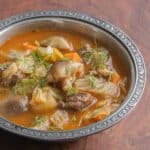
Christopher Miller
Made this for a girlfriend when I was searching for something to do with all the honey mushrooms that were coming up and had plenty of venison in the freezer. Pretty sure it added 6 months to the relationship
TJ
Hey I am making this tonight cause surprisingly I had all of these ingredients, hugger friend gave deer, and I knew a juniper bush with loads of berries in a parking lot.
However almost done making it when does the tomato paste come into play? Just added it now ha! It’s not in the instructions but so far it tastes great
Alan Bergo
Hey TJ. Yep that's a typo. I adjusted it. I usually add it to the garlic and onions and sweat for a minute but it's fine to just toss it in and let it ride. Thanks for catching that.
Cindy Caudell
Can you make mushroom broth with honey mushrooms? I was thinking of freezing some, but I can't seem to find anything about it online.
Kat
I’m wondering the same thing! The broth from boiling them smells delicious.
Sam Schaperow
OK, I think I can help w/some clarification(s):
Honeys are poo pooed for 3 reasons:
1. 1st, I don't believe there's a conclusion they're allergenic (an immune system response), but a limited # of species classified on the common name "honey" may cause ~mild illness in people due to issues w/digestion & sensitivity, however few to none would experience the same when cooked well. Some go so far as to parboil 1st. But, parboiling all species, including those of no close relation to mushrooms that cause problems makes little sense to me.
2. A good # of mycological societies are very fear-based on decision making, which overrides their scientific minded thinking, so they'll ban various mushrooms or even people.
3. A limited # of honeys are harmful to live trees, but this issue is then applied to honeys that aren't....
4. Some don't taste good to enough people, w/o a lot of cover-up creams or other sauces added, but again the species makes a pretty big difference.
More info. can be found in the archives of MushroomTalk (https://groups.yahoo.com/neo/groups/MushroomTalk/info), where I've discussed these points before.
Sam Schaperow
Alan Bergo
Hey Sam, thanks for the info. The reason I suggest parboiling here is only because of the mucilage I have found the species here contain. When cooked in water or in a pickle liquid without a preliminary cooking they make the whole thing slimy. Have you experienced anything like that? When sauteeing I do not treat them differently than any other mushroom.